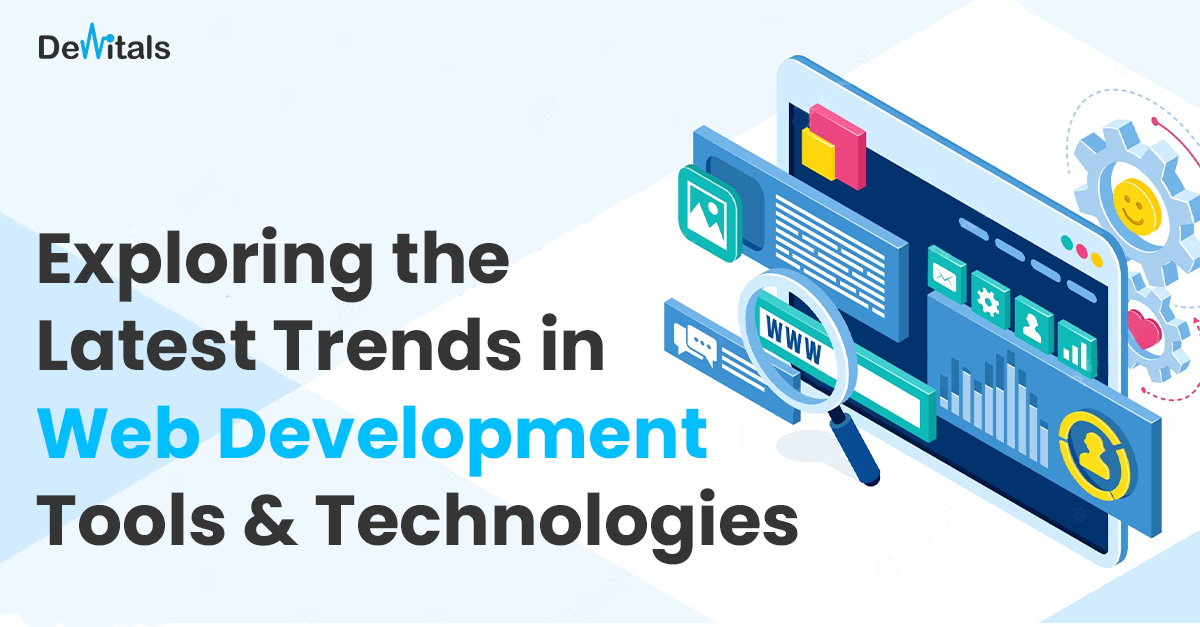In the ever-evolving realm of web development, staying up-to-date with the latest tools and technologies is not just a trend but a necessity. As user expectations continue to rise and competition intensifies, developers are challenged to create faster, more intuitive, and visually appealing websites and applications. This blog post delves into the cutting-edge trends shaping the world of web development tools and technologies in 2023 and beyond.
- Responsive Web Design and Mobile-First Approach
With mobile devices accounting for a significant portion of web traffic, the mobile-first approach is no longer a mere suggestion but a rule of thumb. Web developers are focusing on creating responsive designs that adapt seamlessly to various screen sizes and resolutions. Advanced CSS frameworks like Flexbox and CSS Grid have gained traction, enabling developers to create dynamic layouts that automatically adjust according to the device’s dimensions.
- Progressive Web Apps (PWAs)
Progressive Web Apps continue to gain momentum as they bridge the gap between web and mobile applications. PWAs offer the performance and user experience of native apps while being accessible via web browsers. They load quickly, work offline, and can be installed on a user’s home screen, fostering engagement and retention. This trend has led to the development of tools and libraries that simplify PWA implementation, like Google’s Workbox.
- Serverless Architectures
Serverless computing is revolutionizing the way web applications are developed and deployed. By abstracting the server infrastructure, developers can focus on writing code without dealing with server management. Platforms like AWS Lambda, Azure Functions, and Google Cloud Functions enable developers to run code in response to events, significantly reducing operational overhead and cost.
- Jamstack Architecture
The Jamstack (JavaScript, APIs, and Markup) architecture is gaining traction due to its security, scalability, and speed benefits. By decoupling the front end from the backend, Jamstack allows developers to use modern build tools and CDNs (Content Delivery Networks) to deliver pre-rendered, static content to users. This approach not only enhances performance but also simplifies security management.
- Low-Code and No-Code Development
The democratization of web development is underway with the rise of low-code and no-code platforms. These tools allow individuals with limited coding experience to create functional websites and applications through intuitive visual interfaces. While experienced developers might still prefer traditional coding, these platforms enable rapid prototyping and empower businesses to quickly launch digital solutions.
- Artificial Intelligence and Chatbots
AI-powered features, including chatbots and virtual assistants, are becoming integral to modern websites. Chatbots enhance user engagement by providing instant support and personalized experiences. Natural language processing (NLP) and machine learning enable chatbots to understand and respond to user queries more effectively, making them a valuable asset for customer service.
- WebAssembly
WebAssembly (Wasm) is changing the game by allowing developers to write high-performance code in languages like C++, Rust, and Python, and run it in web browsers at near-native speed. This opens up opportunities for resource-intensive applications such as video editing, gaming, and simulations to be executed directly in the browser, without the need for plugins or heavy JavaScript.
Conclusion
In the dynamic world of web development, staying ahead requires a willingness to embrace new tools and technologies. The trends discussed in this blog post offer a glimpse into the direction web development is taking in 2023 and beyond. From responsive designs and progressive web apps to serverless architectures and AI integration, developers have a plethora of options to create exceptional online experiences. By leveraging these trends, developers can build websites and applications that not only meet but exceed user expectations.


